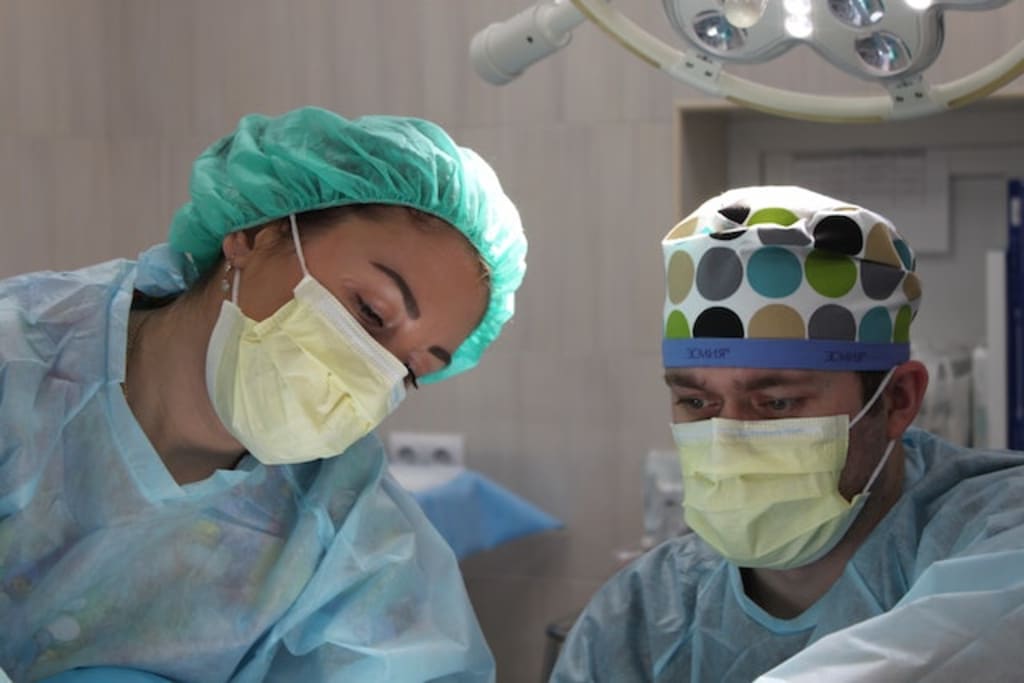Facelift 101: What You Need to Know Before Getting a Facelift
Here is everything you should know before going under the knife.

Image from Pexels
As we age, our skin begins to lose elasticity, and wrinkles and fine lines start to appear on our faces. While there are several non-surgical options available to combat these signs of aging, they may not always provide the desired results. Facelift surgery is a popular cosmetic procedure that can help rejuvenate the face by removing excess skin, tightening facial muscles, and restoring a youthful appearance. In this article, we will discuss the various aspects of facelift surgery, including who is a good candidate, the benefits and risks, different types of procedures, how to prepare, what to expect during and after the surgery, recovery tips, cost, and choosing the right surgeon.
Who is a good candidate for a facelift?
Facelift surgery is a highly individualized procedure, and not everyone is an ideal candidate. The best candidates for facelift surgery are those who have:
- Sagging skin on the face and neck
- Deep wrinkles or creases around the mouth, nose, and eyes
- Loss of facial volume or definition
- Good overall health and realistic expectations of the outcome
It is important to note that facelift surgery is not suitable for those with certain medical conditions, such as uncontrolled high blood pressure, diabetes, or blood disorders. Also, individuals who smoke or have a history of smoking may not be good candidates as smoking can interfere with the healing process and increase the risk of complications.
Benefits
Facelift surgery has several benefits, including:
- Restoring a more youthful appearance
- Improving facial symmetry and proportion
- Boosting self-confidence and self-esteem
- Enhancing the overall quality of life
- Long-lasting results
Facelift surgery can help turn back the clock on aging and restore a more youthful appearance, which can have a positive impact on an individual's mental and emotional well-being.
Risks and complications
Like any surgical procedure, facelift surgery carries some risks and potential complications, such as:
- Bleeding
- Infection
- Nerve damage
- Scarring
- Hair loss
- Swelling and bruising
- Anesthesia complications
It is important to discuss the potential risks and complications with your surgeon and carefully consider them before deciding to undergo facelift surgery.
Different types of facelift procedures
There are several different types of facelift procedures, each designed to address specific concerns and achieve different results. Some of the most common types of facelift procedures include:
- Traditional facelift: This procedure involves making incisions along the hairline, around the ear, and sometimes under the chin to access the underlying muscles and tissues. The surgeon then lifts and repositions the skin and muscles to create a more youthful appearance.
- Mini facelift: This procedure is a less invasive version of the traditional facelift and is ideal for those with mild to moderate signs of aging. The incisions are smaller, and the recovery time is shorter.
- Thread lift: This procedure involves inserting small threads under the skin to lift and tighten sagging skin. It is a minimally invasive option for those with mild to moderate signs of aging.
- Liquid facelift: This procedure involves injecting dermal fillers and Botox to add volume and smooth out wrinkles and fine lines. It is a non-surgical option for those with mild signs of aging.
How to prepare
Preparing for facelift surgery involves several steps, including:
- Choosing a qualified and experienced surgeon
- Discussing your medical history and current medications with your surgeon
- Avoiding certain medications and supplements that can increase the risk of bleeding
- Quitting smoking several weeks before the surgery
- Arranging for someone to drive you home after the surgery and stay with you for the first few days
- Preparing your home for a comfortable recovery, including stocking up on supplies and arranging for assistance with daily tasks
What to expect during and after
Facelift surgery is typically performed under general anesthesia or local anesthesia with sedation. The procedure can take several hours, depending on the type of facelift and the extent of the surgery. After the surgery, you will be monitored in a recovery room for several hours before being discharged.
During the first few days after the surgery, you can expect to experience some discomfort, swelling, and bruising. Your surgeon will prescribe pain medication and antibiotics to help manage these symptoms and prevent infection. You will also need to keep your head elevated and avoid strenuous activity for several weeks.
Facelift recovery tips and timeline
Recovery from facelift surgery can take several weeks, and it is important to follow your surgeon's instructions carefully to ensure a safe and successful recovery. Some tips to help speed up the recovery process include:
- Get plenty of rest and avoid strenuous activity for several weeks
- Keep your head elevated to help reduce swelling
- Use cold compresses to help reduce swelling and bruising
- Avoid smoking and secondhand smoke
- Follow a healthy diet and drink plenty of water
- Attend all follow-up appointments with your surgeon
The timeline for facelift recovery varies depending on the individual and the extent of the surgery. However, most individuals can expect to return to work and resume normal daily activities within two to three weeks.
Cost
The cost of facelift surgery varies depending on several factors, including the type of procedure, the surgeon's experience and qualifications, and the geographic location. On average, the cost of facelift surgery can range from $7,000 to $15,000, not including anesthesia and other related expenses.
Choosing the right surgeon
Choosing the right surgeon for your facelift is crucial to ensure a safe and successful outcome. When selecting a surgeon, consider the following:
- Qualifications and experience
- Board certification
- Before and after photos of previous patients
- Patient reviews and testimonials
- Communication and rapport
It is important to schedule a consultation with the surgeon to discuss your goals, expectations, and any concerns you may have.
Conclusion
Facelift surgery can be a life-changing procedure that can help restore a more youthful and rejuvenated appearance. However, it is important to carefully consider the risks, benefits, and different types of procedures before making a decision. If you are considering facelift surgery, consult with a qualified and experienced surgeon to discuss your options and determine if you are a good candidate. With proper preparation, care, and recovery, you can achieve the desired results and enjoy a more confident and fulfilling life.





Comments
There are no comments for this story
Be the first to respond and start the conversation.